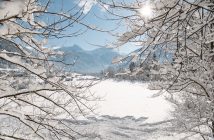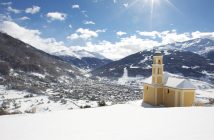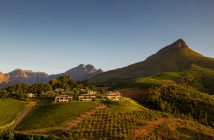The best thing that can happen to a traveller is to pay witness to something so striking, so above expectations, that it causes a moment of silent appreciation. The Temple of Artemis. The Lighthouse of Alexandria. The Hanging Gardens of Babylon.
As a writer and reporter on such travelling astonishments, this is the worst thing that can happen to me; but Petra went and did it anyway.
Before I left Amman for Petra I had dinner with the Minister of Tourism & Antiquities, Mr Nagef Al Fagez. He told me that his country was ‘more than just Petra’, which is just what you’d expect him to say, anything less and he wouldn’t be doing his job.
As it transpired, the Minister was correct. There’s the red sandstone cliffs of the Wadi Rum dessert, where they filmed The Martian, Ridley Scott’s sci-fi epic about Matt Damon growing potatoes in poo; and there’s Jerash, and Madaba, and Azraq, and the Dead Sea in the north. And, there’s Petra.
Like most men of a certain age, I made a promise to myself that I’d one day make pilgrimage to Petra, the ancient Nabataean city, that second when I saw Harrison Ford in Indiana Jones and the Last Crusade.
Like Indy, I too would stand outside The Treasury, the defining image of Petra known as Al-Khazneh in Arabic, and, you know, look all explorer-like and stuff in my fedora hat, minus a pistol most likely, but maybe holding a whip? Anyway, Petra was later, first I’d have to traverse the desert.

Having arrived in Jordan with little knowledge of the country, what I noticed almost immediately was just how safe it appeared. I wasn’t expecting waterboarding at immigration or the rubber-glove treatment, but there were no imposing security, no hurly-burly military men with machine guns – not that I saw, anyway – and no motorway stops every 100 metres, like in many of the Middle Eastern countries I’d visited.
It’s a shame that those with a senseless knowledge of geography clump together any country east of Lebanon into conflicted ‘Middle East’, which just isn’t the case. It’s having a detrimental effect on Jordan and is debilitating the economy. Tourism to Petra has dropped by half since 2010, due mostly to concerns about violence in neighbouring countries, despite the fact that you’re in more danger if you live within 15 miles of Chelmsford on a Saturday night.
Jordan is one of the Middle East’s safest tourist destinations, yet they’ve been forced to spend huge sums on the promotion of tourism, spreading the message that their country is safe and open to the world.
It is true that some countries in the Arab vicinity carry precautionary warnings, while others face a bombardment of daily violence, but under Prince Al Hussein bin Abdullah II, a member of the Hashemite family who have ruled Jordan since 1921, the country has so far weathered the political storm that has engulfed much of the Arab world.
I left Amman, the city where T.E. Lawrence first arrived in 1916, and travelled 300km south, to the desert. The land is flatter and turns more yellow as you exit the city. More sand is blown into your eyes. Plastic bags spin and dance in the wind. There is litter everywhere.
The desert is dry and difficult. Difficult to navigate and difficult to take in. Yellows turn to reds, and there’s a unbroken horizon; nothing built, no manmade skyline. The environment is harsh, but undeniably beautiful.

In Wadi Rum, close to the border with Saudi Arabia, there’s next to no construction, except for a disused rail station and the occasional pointed dwellings of Bedouin tents. It appears unchanged from the scenes described by Lawrence in his 1922 account, Seven Pillars of Wisdom.
It was here where I undertook my own adventure trail, travelling by camel and sleeping in the isolated Captain’s Desert Camp in goat hair tents. Meals consist of Abud or Taboon bread and lamb cooked slowly in a sand oven called a Zarb. Cheese and yoghurt is provided by sheep or camels, and Arabic coffee, prepared throughout the day, is thick and strong, made using grounded fire-roasted beans and served with fragrant cardamom.
I’m advised to carry plenty of water, which is a sure way of adding to the baggage weight. This is more of a concern for my camel than for me. The beast in question is a dumb-looking thing, but happy to carry me across the sand. He has a screwed-up face, much more than the other camals, and teeth likes Janet Street Porter. I feed him an apple in the morning to keep him content, and as we move through the desert he leaves hoof-prints and droppings in the sand like a breadcrumb trail.
Jordan is one of the poorest countries when it comes to water resources, land-locked by Israel, Palestine, Syria, Iraq and Saudi Arabia. Aside from a short shoreline along the Gulf of Aqaba (Red Sea) in the south-west and a break in the north where the salt-encrusted shores of the Dead Sea emerge, the country suffers from severe water scarcity.
During a tented tea-stop in the Barrah Siq of Wadi Rum, something that is as far from a Costa Coffee road-stop as you can imagine, I’m shown a carving of Lawrence’s face, made into the rock by Bediun admirers. He looks bloated. His cheeks have been carved as swollen. It’s not a good likeness, and unlike the paintings I’ve seen of him in his former brick and tile cottage in Clouds Hills in Dorset.
Lawrence’s masterplan of leading an army across the desert to launch an attack on the coastal town of Aqaba – an idea considered so perilous that the Ottomans had not bothered to defend against it – became his defining act. Indeed, his name here is still celebrated, and from Bedouins to tour guides, he is spoken of fondly, as if a distant friend.
If you’ve read Seven Pillars, or even, The Adventures of Tintin: The Red Sea Sharks, and have, seen Indiana Jones and the Last Crusade, then you do sense the presence of these explorers (both fictional and historical) throughout the desert. This is welcome companionship in a place of silence and desolation.

Wadi Rum is a very evocative place. Sound echoes off the walls. Wind-eroded escarpments and red sand dunes erupt from the desert. There are vast gorges where rock monoliths rise to more than 800m, “sheering like a thousand-foot wave towards the middle of the valley”, wrote Lawrence. Sand corridors (Siqs) are created from thousands of years of battering from the wind. They have cut passages through the rock, and in some instances, created bridges over the sand.
Along the King’s Highway I stopped to drink at ‘Ain Musa, Moses’ Spring. This is, supposably, the spot where Moses struck a rock with his staff, causing water to gush forth and hydrate thirsty Israelites battered by wind and baked by the sun. Filling my bottles with ‘blessed’ H20, I’m able to wash the dirt and sand off my face. Before leaving, I was ‘unofficially’ baptised by my guide, Burhan. It was a spur of the moment thing, though I felt as though I had little choice. Surely this was better suited to the Jordan River, the spot where John the Baptist baptised Jesus, supposedly.
I’ve already spent considerable time acquainting myself with the desert and the camels before arriving in Petra in the city of Ma’an. I’ve also learnt how to fix and tie my keffiyeh and have slept beneath the stars – it’s what Lawrence and Indy would have done. There’s a sense that I’ve earnt the right to set eyes on this hidden treasure. That I’ve traverised the desert and faced its force, just as those intrepid explorers before me have.
David’s adventure continues tomorrow when, fedora tilted and whip in hand, the music crescendoes as he arrives at Petra…




